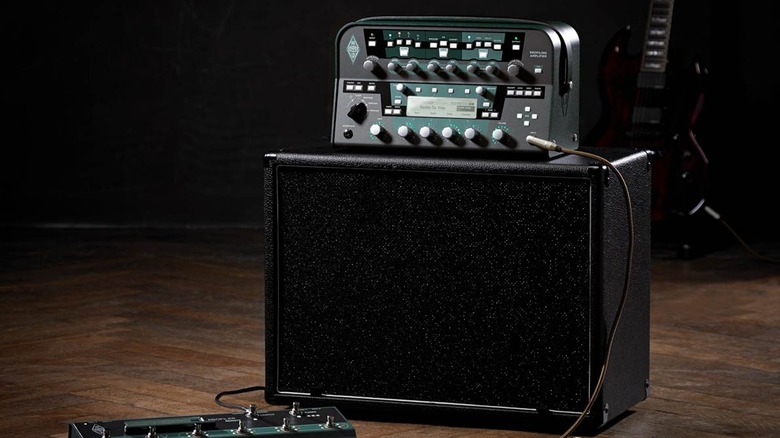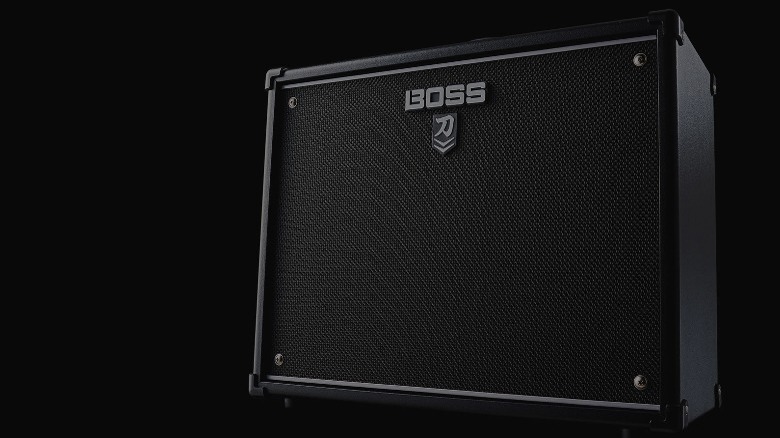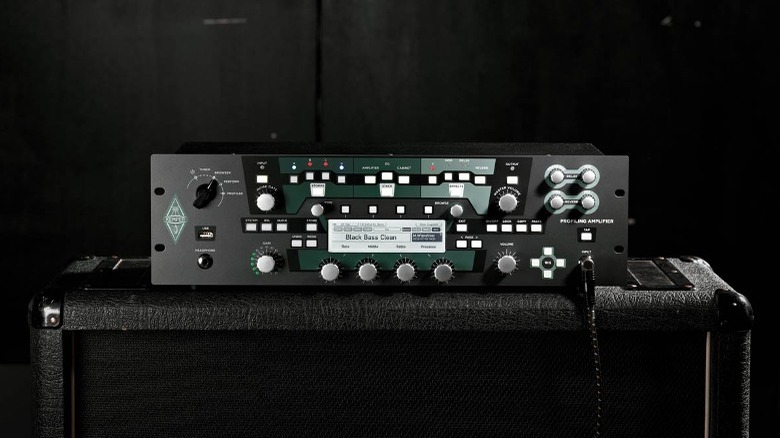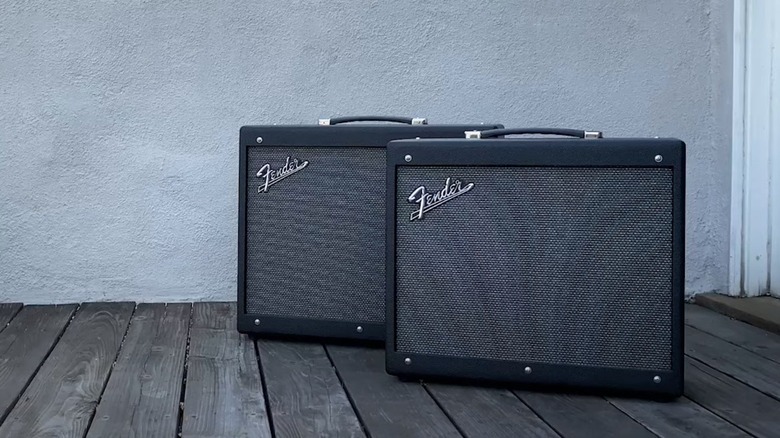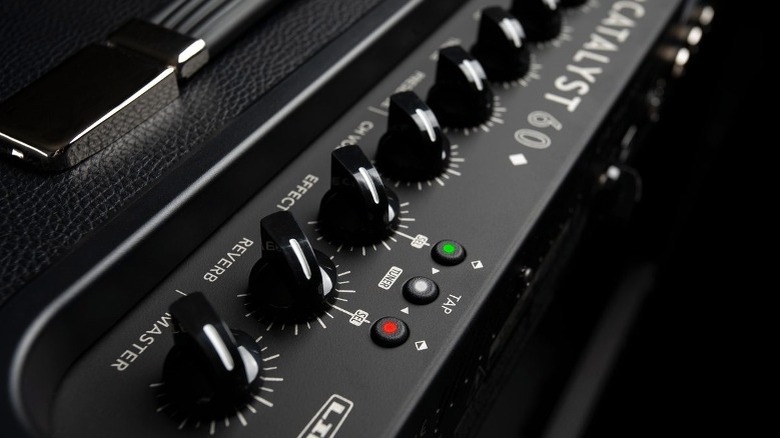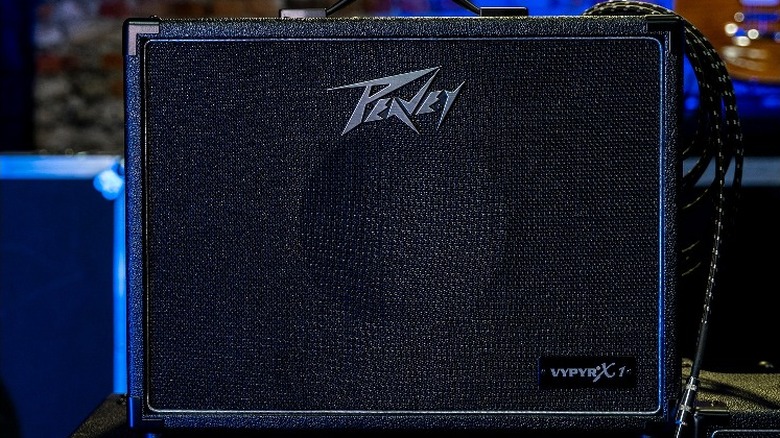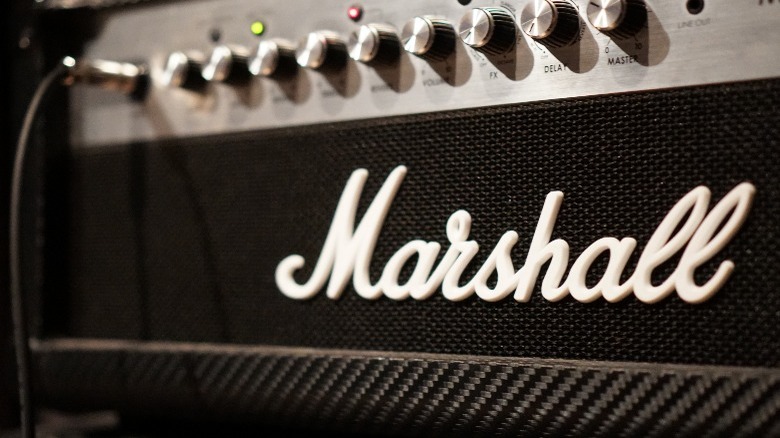5 Of The Most Popular Modeling Amps To Emulate Your Favorite Guitar Tones
The world of music is full of shiny gear with different price tags. If you've been playing the electric guitar for a while, you probably have over a dozen different amps, effect pedals, and guitars on your wishlist.
Choosing the right electric guitar is crucial for getting the tonal characteristics you're looking for. What's equally important is getting your hands on a suitable amplifier. Most professional amplifiers offer distinctive sound characteristics. The Fender Deluxe Reverb, for instance, is widely popular among blues and classic rock players. On the other hand, Line 6 amps are famous for delivering aggressively distorted sounds for metal players.
In recent years, modeling amps have gained a lot of popularity among guitarists looking for a versatile package. Although controversial at first, more and more professional players are welcoming these modern combo amps into their rigs. If you're looking for a new amp with myriad tricks up its sleeve, opting for a modeling unit can be an excellent choice. Finding the right model depends on your budget, playing style, and musical needs. In this post, we'll go through five of the most popular modeling amps you can get in 2024. The models mentioned were chosen based on real user reviews from popular websites like Guitar Center and Sweet Water, their use by professional musicians, and personal experience.
Boss Katana-100 MkII
Arguably the most famous household name among combo amps, the Boss Katana has a reputation for offering quality and quantity in one package. The Katana-100 MkII is the latest installment in Boss' line of modeling combo amps that comes with many features at a reasonable price tag.
The Katana MkII offers 60 presets for various genres, suitable for both the electric and acoustic guitar. If those 60 tones are not enough for you, you can build your own sound from the ground up. You can either use the physical knobs on top of the amp itself or the Katana Tone Studio software on a computer to set up your custom sounds. The amp offers five amp voicings, a three-band equalizer, and a multitude of effects such as reverb, delay, chorus, and tremolo.
For a combo amp under $400, the Boss Katana-100 offers an impressive sound quality. Whether you want to play clean tones, overdriven riffs, or crazy fast solos, you can expect excellent clarity from the Katana MkII. The Boss Katana MkII's 100-watt output, paired with a 12-inch speaker, drives enough power for both practice and live performances. Moreover, its foot switch support makes it suitable for live gigs.
Kemper Profiler
When it comes to modeling amps, the Kemper Profiler is as good as it gets. Steve Morse, Paul Gilbert, and Alex Skolnik are only some of the famous guitarists who use the Kemper Profiler. If you're looking for one of the most versatile options on the market and budget is not an issue for you, Kemper's powerful and complex modeling amp is a great choice.
Like other amps on this list, the Kemper Profiler offers a plethora of amp voicings, effects, emulated cabinets, and much more. However, one feature that distinguishes the unit from other models is its profiling technology. The Kemper Profiler allows you to connect your favorite amplifiers, create a copy of its sound, and save it as a preset. Kemper claims that the profiling technology is so accurate in capturing all the tonal characteristics of any amp that you won't be able to tell the original from the emulated sound apart.
Kemper offers the Profiler as an amp head, rack, and floorboard. They are identical in the features and sound that they can offer. Choosing one depends on your guitar rig. The classic Profiler Head is suitable for a studio environment, whereas the Floorboard is excellent for live performances. Bear in mind that none of these models come with speaker cabinets, meaning you need a separate device to hear and monitor what you're playing. You can opt for a Kemper Kabinet alongside a floorboard/head to work as a speaker. Any other pair of headphones, cabinets, or monitoring speakers can also work with Kemper Profiler devices.
Fender Mustang GTX100
Fender is one of the biggest frontiers in the guitar industry. The company's reputation is built on decades of making world-class guitars and amplifiers and is a testament to its dedication to quality. Fender's modeling amp lineup, the Mustang, is a popular choice for entry and intermediate levels. Its most advanced model, the Mustang GTX100, is one of the most versatile modeling amps for $500.
With 200 presets, Wi-Fi and Bluetooth connectivity, and a 12-inch Celestion speaker, the Mustang GTX100 offers a lot of bang for your buck. Besides the knobs and buttons on the amplifier, you can use the Fender Tone app on your smartphone to switch between presets and control different parameters and effects. The app also allows you to build your own custom tones or download user-created presets. The Mustang GTX1000 doubles as a Bluetooth speaker as well. This feature can come in very handy for playing backing tracks when jamming or performing live. The 100-watt output is suitable for small- and medium-sized gigs.
We've tested the Mustang GTX100 with different Fender, Squire, and Gibson guitars. While the clean and slightly overdriven tones sound impressively warm and spacious, distorted presets sound rather boxy and flat. The lack of dynamic response from high-end tube amps and cabinets is more noticeable when shredding and playing harsher riffs. If you mostly play pop, jazz, blues, and classic rock tunes, the Fender Mustang GTX100 can be an excellent choice. On the other hand, if you're more into heavy metal and distorted tones, the Boss Katana-100 MkII or the Line 6 Catalyst 100 (later mentioned in this post) are more suitable modeling amps.
Line 6 Catalyst 100
The Catalyst 100 from Line 6 is an excellent modeling amp that offers an impressively punchy and responsive high gain, suitable for metal riffs and solos. Like other models on this list, the Catalyst 100 offers multiple amp voices and effects. Although the 18 presets offer less variety than other rivals mentioned, they still cover most major tonal characteristics for just about any genre. However, the Catalyst 100 shines best in highly distorted sounds.
Like the Fender Mustang series, the Line 6 Catalyst 100 syncs with a mobile app, allowing guitarists to control different parameters through a smartphone. Moreover, the built-in power attenuator allows for quiet practice sessions without altering the natural characteristics of high-gain sounds. As with most of the competition, the Line 6 Catalyst offers a 100-watt 12-inch speaker, suitable for live gigs in front of a small or medium crowd. Another feature of the Catalyst 100 is its built-in four-channel USB audio interface with an XLR line out that makes home recording much more convenient.
Peavey Vypyr X1
Last but not least, the Peavey Vypyr X1 makes it to the list as one of the most budget-friendly modeling amps in the market. With a $200 price tag, the Peavey offers a lot of value for the money. One of the advantages of the Vypyr X1 over other models is its versatility in supporting the electric guitar, acoustic guitar, and bass. Through its Variable Instrument Input system, the amp adapts to your choice of instrument, allowing it to adjust gain structure and input sensitivity on the fly.
The Peavey Vypyr X1 comes with 36 onboard amp models. Six of them are for the acoustic guitar, and six are for bass. Besides the presets, the amp gives you access to 12 stompbox effects for controlling different parameters like reverb, delay, wah, octave, tremolo, compression, and much more. The custom-voiced 8-inch speaker does a decent job as a multi-purpose cabinet. But though the 30-watt output is acceptable for practice sessions and smaller gigs, it falls short of keeping up with other amps on this list.
Methodology
This article is written based on hundreds of online reviews on popular websites, such as Guitar Center. All products listed have at least a 4-star rating on the Sweet Water website. Moreover, the information regarding the qualities and features of each amp comes from the writer's personal use in a studio environment, real user reviews, and official information available on the amp makers' websites. This article includes a versatile list of popular modeling amps that fit different budgets and intent of use
